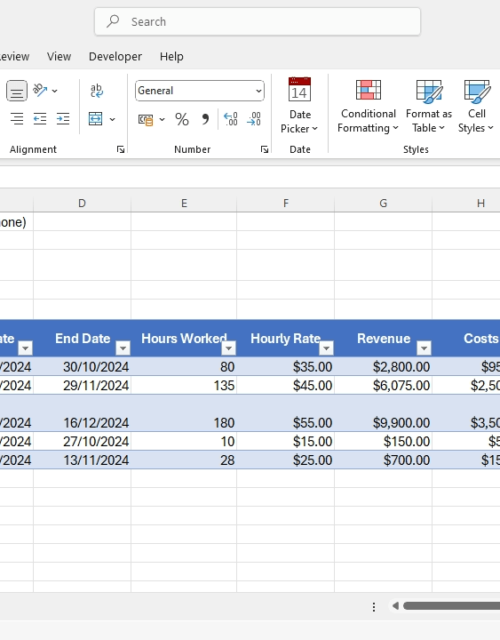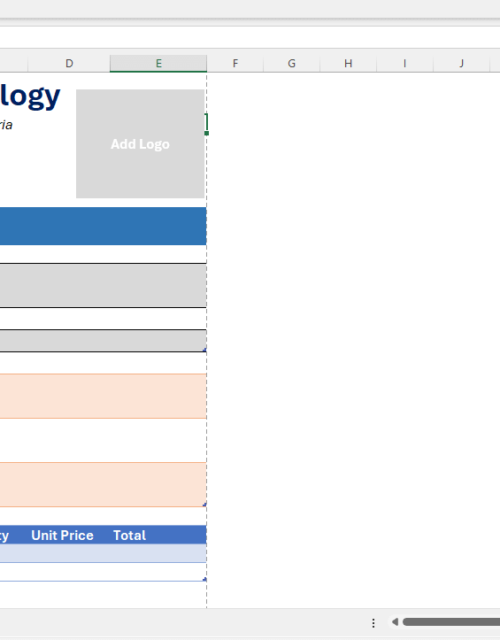Crafting a Winning Business Plan for Emerging Industries in 2025 and Beyond: Step-by-Step Guide

As the business landscape continues to evolve, emerging industries are revolutionizing the way we live, work, and interact with one another. Crafting a business plan for emerging industries is a vital tool for success.
From renewable energy and sustainable technologies to e-commerce and digital health, new industries are sprouting up, creating opportunities for entrepreneurs and innovators to capitalize on the latest trends.
However, succeeding in an emerging industry requires a well-crafted business plan that takes into account the unique challenges and opportunities of these developing markets. In this guide, we’ll walk you through the process of creating a winning business plan for emerging industries, using current market trends, modern business plan templates, verifiable data, and reliable statistics.
Understanding Emerging Industries
Before diving into the business plan creation process, it’s essential to understand the emerging industry landscape.
Emerging industries are sectors that are in their early stages of development, often driven by technological advancements, changing consumer behaviors, or shifts in regulatory landscapes. These industries are characterized by rapid growth, high uncertainty, and the potential for significant returns on investment.
Here are some key trends and statistics to consider:
- Renewable Energy: Renewable Energy is energy from natural resources like the sun and wind, which are constantly replenished. The global renewable energy market is projected to reach $1.5 trillion by 2025, with solar energy expected to account for 30% of the market share. (Source: MarketsandMarkets)
- E-commerce: E-commerce is buying and selling goods online. The global e-commerce market is expected to reach $6.5 trillion by 2023, with mobile commerce accounting for 73% of total e-commerce sales. (Source: Statista)
- Digital Health: Digital Health uses technology to improve healthcare. The global digital health market is projected to reach $504.4 billion by 2025, with telemedicine and personalized medicine driving growth. (Source: Grand View Research)
- Sustainable Technologies: Sustainable Technologies are eco-friendly innovations that reduce environmental impact. The global sustainable technologies market is expected to reach $12.5 trillion by 2025, with green building and sustainable agriculture driving growth. (Source: ResearchAndMarkets)
- Quantum Computing: Quantum Computing is a type of computing that uses quantum mechanics to process data much faster than traditional computers.The global quantum computing market is expected to reach $65 billion by 2029, growing at a CAGR of 56.4% from 2022 to 2029. (Source: MarketsandMarkets).
- Advanced Robotics and Automation: Advanced Robotics and Automation involve machines that can perform tasks automatically. The global robotics market is expected to reach $237 billion by 2025, growing at a CAGR of 18.2% from 2020 to 2025. (Source: MarketsandMarkets).[1]
- Augmented and Virtual Reality Applications: Augmented and Virtual Reality Applications create interactive experiences by either adding to the real world or creating a completely virtual environment. The global AR and VR market is expected to reach $143 billion by 2025, growing at a CAGR of 33.8% from 2020 to 2025. (Source: MarketsandMarkets).[2]
- Artificial Intelligence Ethics and Governance: Artificial Intelligence Ethics and Governance ensure AI is used safely and ethically. The global AI ethics market is expected to reach $1.4 billion by 2025, growing at a CAGR of 30.6% from 2020 to 2025. (Source: Statista).[3]
- Space Tourism and Exploration: Space Tourism and Exploration is about traveling to space for enjoyment or research. The global space tourism market is expected to reach $1.4 billion by 2027, growing at a CAGR of 17.3% from 2020 to 2027. (Source: Sci-Tech).[4]
- Circular Economy and Upcycling Technologies: Circular Economy and Upcycling Technologies focus on reusing materials to reduce waste and create more sustainable products. The global circular economy market is expected to reach $4.5 trillion by 2030, growing at a CAGR of 10.3% from 2020 to 2030. (Source: MarketsandMarkets).[5]
- Blockchain Technology: Blockchain Technology is a digital ledger system that allows secure, transparent, and tamper-proof transactions. The global blockchain market is expected to reach $23.3 billion by 2023, growing at a CAGR of 67.3% from 2018 to 2023. (Source: MarketsandMarkets).[6]
- Synthetic Biology: Synthetic Biology involves designing and creating new biological parts, devices, and systems. The global synthetic biology market is expected to reach $38.7 billion by 2025, growing at a CAGR of 24.6% from 2020 to 2025. (Source: MarketsandMarkets)
- Biotechnology and Gene Editing: Biotechnology and Gene Editing refer to the manipulation of living organisms or their genetic material to develop new products or improve existing ones. The global biotechnology market is expected to reach $2.4 trillion by 2028, growing at a CAGR of 7.3% from 2020 to 2028. (Source: Grand View Research).[7]
- Nanotechnology: Nanotechnology is the science of manipulating matter at an extremely small scale to create new materials with unique properties. The global nanotechnology market is expected to reach $125.7 billion by 2027, growing at a CAGR of 14.3% from 2020 to 2027. (Source: MarketsandMarkets).
- Cybersecurity: Cybersecurity encompasses the technologies and practices designed to protect networks, devices, and data from cyber attacks or unauthorized access. The global cybersecurity market is expected to reach $300 billion by 2024, growing at a CAGR of 13.4% from 2019 to 2024. (Source: MarketsandMarkets).
The Importance of a Winning Business Plan
A winning business plan goes beyond traditional templates. It’s a dynamic document that outlines your vision for revolutionizing an emerging industry. Here’s why it’s crucial:
- Attracts Investors: A well-crafted, winning plan showcases your innovative thinking and market potential, making your venture more attractive to forward-thinking investors.
- Guides Decision-Making: In the fast-paced world of emerging industries, a well-crafted plan serves as a north star for strategic decisions.
- Anticipates Challenges: By thoroughly analyzing the emerging landscape, you can better anticipate and prepare for potential obstacles.
- Fosters Innovation: The process of creating a business plan encourages creative thinking and pushes you to consider groundbreaking solutions.
- Adapt to Change: A disruptive plan is inherently flexible, allowing you to pivot quickly as the emerging industry evolves.
Now, let’s dive into the step-by-step process of crafting your winning business plan for emerging industries.
Crafting a Business Plan for Emerging Industries: Step-by-Step Approach
Step 1: Identify your Emerging Industry
The first step in crafting a business plan for emerging industries is to pinpoint the specific emerging industry you want to enter. This requires a combination of personal passion, market analysis, and foresight.
Action steps:
- List 3-5 emerging industries that interest you (The list above should help you get started)
- Research growth projections and market size estimates for each. There are different projections for each emerging industry including: market size & growth, industry trends, applications, etc. In the above list, we gave a hint for market size and growth. Let’s take cybersecurity as an example, check the following projections:
- Industry trends: Cybersecurity is a growing concern for businesses, with 64% of organizations experiencing a cyber attack in 2020. (Source: Cybersecurity Ventures)
- Threats and risks: The number of cyber attacks is increasing, with the average cost of a data breach reaching $3.92 million in 2020. (Source: IBM)
- Solutions and services: Cybersecurity solutions and services are becoming increasingly important, with the global market expected to reach $300 billion by 2024. (Source: MarketsandMarkets)
- These should help you understand the opportunities and threats in each of your list of emerging industries.
- Assess your skills, experience, and network in relation to these industries. This will help you identify your strengths and weaknesses for each industry on your list. Remember that it’s not just about the market size and profit potential, but about sustainability and beating competition in the longrun.
- Consider the long-term potential and societal impact of each industry. Put this to heart: “You are in business if you are solving a problem.” Hence, if the emerging industry does not benefit society, you are out of business. For example: Cybersecurity has fascinating projections. If you are skilled to venture into this business, you should trust the business to be sustainable and have a societal impact.
- Finally, understand the unique needs of your chosen industry. The foundation of a strong business plan lies in understanding the nuances of your specific industry. Emerging industries have distinct challenges, like regulatory hurdles, high competition, and rapid technological change. Consider the following example:
- According to Statista the global blockchain market is expected to grow from $7.18 billion in 2022 to $163.83 billion by 2029. However, Blockchain companies face regulatory uncertainties, requiring extensive compliance and market trend analysis in their business plan.
It’s your turn: Which emerging industry are you interested in? You should know that this step is true for any industry you want to launch, not necessarily one of the emerging industries. Let’s hear from you in the comments section below.
Step 2: Clearly Define Your Business Vision and Goals
Now that you’ve understood the business you want to venture into, it’s time for you to state why you should be in the business. This is your second step when creating a business plan for emerging industries.
What are you bringing to the table? You should look inward and outwards while crafting your business objectives. Look inward to craft your business vision, and outward to craft your business mission. In a nutshell, your vision is what you see, while your mission is what you carry.
Your business goals should come from your business mission. The vision and mission should align with both the market’s current needs and future potential.
Let’s assume that you chose the blockchain technology industry, a sample vision statement can be “to revolutionize the global supply chain with transparent, secure, and decentralized blockchain solutions that cut down fraud and increase efficiency.”
Over to you: In your chosen industry, what are you bringing to the table? Let us know your vision and mission statements in the comments box.
Step 3: Conduct In-Depth Market Research
When it comes to creating a business plan for emerging industries, market research is vital.
With your emerging industry and vision in view, it’s time to dive deep into market research. This step is crucial for understanding the landscape you’re entering and identifying opportunities for disruption.
Action Items:
- Analyze current market size and growth projections. In creating a business plan, marketing research is crucial. This involves analyzing the current market size and growth projections to understand the potential of your new business.
- Let’s take AI-driven personalized medicine as an example. A typical market size and growth projection report: According to Fortune Business Insights, the digital health market size was valued at USD 375.99 billion in 2022 and is projected to grow from USD 452.79 billion in 2023 to USD 1,965.30 billion by 2030, exhibiting a CAGR of 23.3% during 2023-2030. North America dominated the global market with a share of 40.79% in 2022.
- Identify key players and potential competitors. Identify their strengths, weaknesses, and market size. This will help you position yourself in the market.
- Key players in this industry are big tech companies, pharmaceutical giants, and medical technology companies.[8]
- Study the regulatory landscape and potential changes in your chosen industry, Your understanding of the regulatory landscape and upcoming changes would ensure compliance and foresight in planning.
- The regulatory landscape for AI-driven healthcare is evolving rapidly to balance innovation with patient safety and data privacy. The US Food and Drugs Administration FDA, the European Medicines Agency EMA, and the US National AI Initiative Office are key regulatory bodies.[9]
- Examine technological trends shaping the industry. This offers insights into future industry shifts and will keep you relevant.
- Key technological trends include advancements in Natural Language Processing (NLP), Robotic Process Automation (RPA), Predictive Analytics, Telemedicine and Remote Monitoring, AI-enhanced medical Imaging, etc.
- Conduct customer interviews to understand your potential customers’ pain points and needs. This will help you craft your UVP.
- In healthcare, patients desire more accurate diagnoses, personalized treatment plans, accessibility and convenience, accurate diagnostics, and cost-effective solutions.
- Explore adjacent industries for potential crossover opportunities. Lastly, exploring adjacent industries may reveal untapped opportunities for expansion or diversification.
- Adjacent opportunities in healthcare include integration with wearable health devices for real-time data collection, blockchain technology for enhanced data security and transparency, health and wellness apps, etc.
It is important to understand that when analyzing markets you should consider global trends and local market conditions. Tools like Google Trends, Statista, and industry reports will help you gather real-time and reliable data to support your business assumptions.
Step 4: Define Your Unique Value Proposition (UVP)
Every business plan for emerging industries must feature an innovative selling point. Your UVP is the unique benefit that sets your business apart from competitors. It is the cornerstone of your business plan.
It clearly articulates how your solution addresses a significant problem in a way that’s different from and superior to existing alternatives.
Action Items:
- Identify the core problem you’re solving. There are numerous problems with varying solutions, which one are you targeting?
- Identify your Unique Selling Point (USP) by articulating your unique solution. Determine what makes your product or service unique. Is it a proprietary technology, a sustainable material, or an innovative business model?
- Determine your Value Proposition by quantifying the benefits of your approach. Based on your USP, create a value proposition that resonates with your target market. You can use the following formula: “We help [target market] achieve [desired outcome] by [unique benefit].”
- Craft a clear, concise UVP statement. For example, “DuroSolve delivers personalized medical services that are 35% more effective than traditional approaches by combining real-time patient data with advanced machine learning algorithms, reducing treatment time and improving patient outcomes while cutting healthcare costs by 45%.”
- Validate your UVP. You may need to test your UVP with potential customers, industry experts, and partners to ensure it resonates with your target market.
Now, what do you think about this step? Using your chosen industry, craft a UVP and let us see how unique it handles the problem you are solving.
Step 5: Develop a Robust Business Model
Your business model outlines how your company will create, deliver, and capture value in the emerging industry. For disruptive ventures, innovative business models can be a key differentiator.
There are different business models to choose from, the most popular and simplest being the Business Model Canvas (BMC). Using the BMC you can capture the highlights of your business in a page. Learn more about business models here.
For emerging industries, let’s highlight the action steps you can take,
Action Items:
- Choose a revenue model that is suitable to your industry (e.g., subscription, freemium, pay-per-use)
- Identify key partnerships and resources required to deliver your promise.
- Define your cost structure. This would help you create financial projections to determine the viability of your idea,
- Outline your customer segments and relationships, channels, and key activities.
- Consider innovative approaches like platform models or circular economy principles
Step 6: Outline Your Marketing and Sales Strategy
This is one of the most important steps in your business plan. Without a robust strategy, your business may collapse in the first 3 years.
One strategy you should not joke about is educating potential customers. In emerging industries, educating the market about your solution is often as important as selling it.
Thus, your marketing and sales strategy should build awareness, establish credibility, and drive adoption.
Action Steps:
- Define your target market segments.
- Develop a strong brand identity and messaging.
- Create a content marketing strategy to educate your audience. E.g. Develop whitepapers and case studies showcasing the efficacy of AI in personalized medicine.
- Plan for industry conferences and thought leadership opportunities. E.g. Partner with respected medical institutions for pilot programs.
- Outline your sales process and cycle. E.g. Implement a referral program for early adopters.
- Consider innovative marketing approaches like AR/VR demonstrations or AI-powered personalization
Step 7: Plan Your Operations and Management Structure
In emerging industries, technology and innovation are integral to operations. Your business plan must explain how your company will utilize modern technology to streamline operations, automate processes, and scale.
Also, operational excellence is crucial in emerging industries where standards are still being set. Your plan should demonstrate how you’ll build and scale a high-performing organization.
Actionable Items:
- Outline your organizational structure
- Define key roles and responsibilities
- Describe your approach to talent acquisition and retention
- Plan for scalability and potential pivots in your operations.
- Address regulatory compliance and quality control measures. Outline your quality control process, including testing, inspection, and certification.
- Determine your supply chain, including sourcing, logistics, and distribution.
- Outline your product development process, including design, testing, and iteration.
- Determine your customer support process, including channels, response times, and resolution rates.
Step 8: Create Financial Projections
While financial projections for emerging industries are inherently uncertain, they’re crucial for demonstrating the potential of your venture. Focus on showcasing your understanding of key drivers and your ability to achieve profitability.
An emerging industry business plan must include a financial section that forecasts:
- Revenue projections
- Startup costs
- Operating expenses
- Profit and loss statements
Actionable Steps:
- Develop 3 – 5-year financial projections including income statements, balance sheets, and cash flow statements
- Outline key assumptions and growth drivers, e.g. 30% year-over-year growth in healthcare AI spending.
- You may need to perform sensitivity analysis for different scenarios, this will help you identify key financial milestones and funding needs.
Step 9: Identify and Mitigate Risks
Emerging industries come with significant risks. Demonstrating that you’ve identified potential pitfalls and have plans to mitigate them is crucial for building investor confidence. So, you should
- Conduct a thorough SWOT analysis.
- Identify industry-specific risks (e.g., regulatory changes, technological shifts) that may affect the business.
- Perform a detailed competitive analysis and outline potential competitor responses to your entry.
- Develop contingency plans for key risks.
- Consider creating multiple scenarios (best case, worst case, most likely)
Step 10: Draft Your Executive Summary
The executive summary is the first impression of your business plan. It should be concise yet compelling, summarizing the key points of your plan.
While this is often the first section of your business plan, it’s best to write it last. Your executive summary should concisely capture the essence of your business idea and entice readers to delve deeper.
While crafting your executive summary, you should:
- Summarize your business concept and UVP in one paragraph
- Highlight key market opportunities and your approach to capturing them.
- Briefly outline your team’s unique qualifications that will make your business excel and beat the competition,
- Include a snapshot of financial projections and funding needs.
- Always end with a compelling call to action.
Now that you have crafted your executive summary, I would love to hear from you. Can you drop a snapshot of your executive summary in the comment box?
We have well-written business plan templates that can serve as a sample and a guide, you may need to download one or more of them:
This marks the end of your business plan, however, you must review and refine your plan.
Step 11: Review and Refine
The final step is to review and refine your business plan. This is an iterative process that may require multiple rounds of feedback and revision.
Action Items:
What should you do at this stage? It may not be important but it is necessary that you:
- Share your plan with trusted advisors and industry experts.
- Conduct a readability review to ensure clarity and coherence.
- Update your plan with the latest industry developments.
- Ensure consistency across all sections, and
- Prepare different versions for different audiences (e.g., investors, partners, team members).
After feedback, you might need to add one or two sections, update your financial projections based on new study, or refine your UVP to more clearly differentiate from a competitor who recently entered the market.
Conclusion
Crafting a winning business plan for an emerging industry is an exciting and challenging endeavor. By following this step-by-step guide, you’ve created a comprehensive roadmap for your venture that addresses the unique opportunities and challenges of your chosen industry.
Remember, in the world of emerging industries, adaptability is key. Your business plan should be a living document, regularly updated to reflect new insights and market changes. With a solid plan in hand, you’re well-equipped to secure funding, attract top talent, and navigate the complexities of your emerging industry. As you move forward, stay curious, remain agile, and never lose sight of the transformative impact your venture can have. The world of emerging industries is full of possibilities – your business plan is the first step towards turning those possibilities into reality.
[1] MarketsandMarkets: “Robotics Market by Type, Application, and Geography – Global Forecast to 2025.”
[2] MarketsandMarkets: “Augmented Reality and Virtual Reality Market by Component, Application, and Geography – Global Forecast to 2025.”
[3] MarketsandMarkets: “Artificial Intelligence Ethics Market by Component, Application, and Geography – Global Forecast to 2025.”
[4] MarketsandMarkets: “Space Tourism Market by Type, Application, and Geography – Global Forecast to 2027”
[5] MarketsandMarkets: “Circular Economy Market by Type, Application, and Geography – Global Forecast to 2030.”
[6] MarketsandMarkets: “Blockchain Market by Component, Application, and Geography – Global Forecast to 2023”
[7] Grand View Research: “Biotechnology Market Size, Share & Trends Analysis Report by Application (Pharmaceuticals, Biotechnology, Agriculture), by Region, and Segment Forecasts, 2020 – 2027”
[8] AI In Healthcare Market Size, Share & Growth Report, 2030 (grandviewresearch.com)
[9] https://www.grandviewresearch.com/market-trends/artificial-intelligence-healthcare-technologies-regulatory-competitive-landscape










